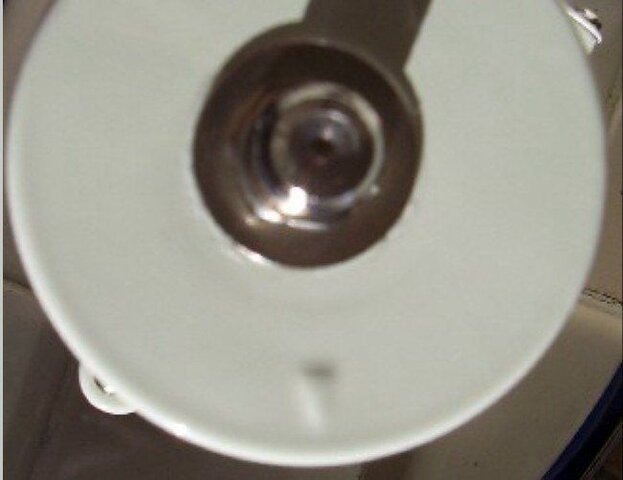"Arrow" should be pointing to "12 o'clock" with Dish at South Sat.
Wrong......
The arrow needs to be at 9 o'clock position looking at the coax connection.
That leaves the C band connector/ little box at about the 4 o'clock position.
But make sure that the dish is pointed at the most southern satellite.I live in North Carolina and in my case it is 83W, this was my best choice.
I have a 7 1/2 foot mesh dish and the scalar is set at 36.8 inches.You need to calculate it for your size of dish, unless you have a manual that came with your dish that may tell you.
Make sure that the scalar is square. Measure along each support tubing from dish edge to scalar, each length has to be exactly the same. Remeasure the distance between scalar and center of dish again to make sure it is the distance you need.
You can not just slab the scalar on the support arms, you could get poor quality signal or no signal at all especially in KU use. If your scalar is of by 1/2 an inch you lose about 50% of signal strength.
The BSC 621-2D LNBF is sticking out the backside toward the dish 0.8 inches.
You may have to move the LNBF in or out and adjust the skew a little bit, but make very small adjustment at a time.
You have to measure and adjust everything precisely because, KU on a c-band dish is not very forgiven and you will lose a lot of signal / quality very fast.
If you aim your dish and get KU, you always can bet that you can receive C band.
I have and use this BSC 621-2D with very good results. I can pick up just about anything with my S10 receiver, providing the receiver can handle the signal formats.


